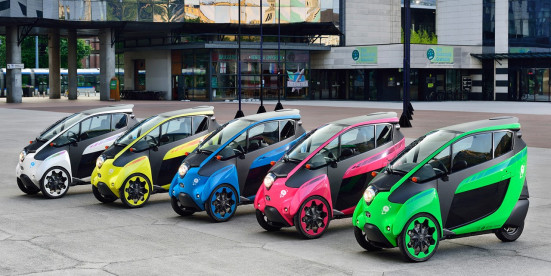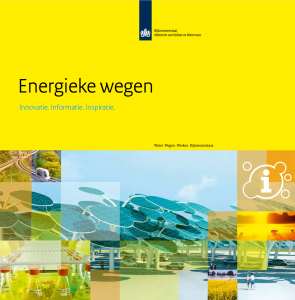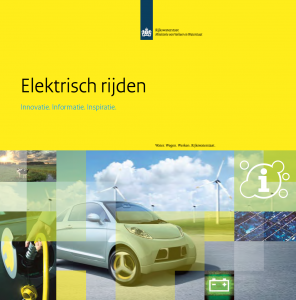How self driving cars will lead to small, shared, electric vehicles that will save our cities and climate
- ,
- , Mobiliteit

Why self driving leads to sharing
Currently car sharing services require you to go to a car sharing point that is hopefully somewhere in the vicinity but never in front of your door.

You also have to reserve the car well in advance to avoid that somebody else whisks it away. Both these things are inconvenient and to make matters worse: if you are making a two way trip you have to do this twice. You can also rent one car for both legs of the trip but that means renting it for a longer period. E.g. if you are on a weekend trip to your parents who live one hour driving away the renting period would increase from two hours to 48 or more.
Now imagine the car can pick you up in front of your door. If it is unavailable another car comes rushing in from another part of the city. And on your destination you just get out. No need to park the car.

Thus self driving cars would make car sharing services so much more convenient that services with self driving cars basically play in a different league. This explains all the billions being invested in self driving by companies like Lyft and Uber at the moment.
Before we go on it is also important to realize that the competition from car sharing to public transportation is less relevant than the competition to private cars. Why? Simply because private cars are dominant in terms of kilometers driven, space required and pollution caused.
In short: self driving technology turns every car into a taxi but without an expensive driver and that makes self driving cars ideal for sharing.
Why sharing leads to electric vehicles
Car sharing means that cars are better utilized. Private cars are – on average – only used 5% of the time. Shared cars might be used 10% or even 30% of the time. So sharing means less vehicles while each vehicle drives more kilometers. A car that makes more kilometers is bound to be electric because the cost calculation behind an electric vehicle is in essence very simple:
- You pay more for the battery (once).
- You pay less for energy and maintenance (per kilometer).
The battery cost is falling rapidly and electric vehicles also have the advantage that an electric drive-train is cheaper to produce and develop. In the end they will be cheaper but it will take until 2025-2030 before they have a lower sticker price.

UBS very optimistically predicts price parity in 2018 after tearing apart an Opel Ampera-E
The big economic win of an electric vehicle is energy. The reason is simpe physics. A conventional motor throws away 75% of more of the energy from the gasoline it burns as heat. An electric motor throws away less than 10%. Now there are many finesses and the price of gasoline and electricity is different from location to location. But you can make a rough estimate of your energy savings:
- Add up all the gasoline you would pay at the pump with the conventional vehicle of your choice over its lifetime.
- The electric car will save you between 65% and 80% of that money.
Because the electric drive-train needs no maintenance this is a cost saver too. In the Netherlands the estimate so far is that you save about 2/3 on maintenance.
By the way: ever dreamed of driving an old-timer like a Rolls Royce Silver Shadow or a Jaguar E-type but afraid that the maintenance cost would be prohibitive? I have! If you convert the old-timer to electric you would be able to throw out most of the parts requiring maintenance and replace them with stuff that needs no maintenance at all. Just saying…
The point of this little lecture is that the cost advantage of an electric vehicle increases with the number of kilometers driven. Because shared cars drive more they will have an extra incentive to be electric.
Why sharing leads to smaller cars
Many people point to Taxis, Uber or Lyft as if that’s all there is regarding car sharing. This is also the vision of e.g. Elon Musk and other car CEO’s. And it is understandable if you are a car company or if you love the current car culture. It’s tempting to think that you only have to swap out the drive-train for an electric one while consumers will just loan the car to other consumers now and then. That way the basic paradigm hardly changes.
But I’ve always wondered why we lug around 1500 kg of steel if we just want to move a 70kg human. It is terribly inefficient in terms of energy and space and also terribly expensive. In the current situation it makes sense because you have only one car that you use for every type of trip. You use the same vehicle to commute, pick up the kids and go on holidays. But if you start sharing cars things change. If you start sharing cars you choose your car every time you plan a trip!
If you choose a car for your one person commute (90% of kilometers), why would you pay for an SUV that seats five? Why not take a small and nimble car for a fraction of the price? Especially if the thing is driving itself while you are otherwise engaged… And if you don’t leave the city it can be even lighter and cheaper: essentially an enclosed bike but with full protection against rain, cold and other vehicles. For me the Toyota i-Road comes to mind (which is a blast to drive by yourself by the way).

Why small, shared, self driving, electric cars are good for cities
Municipalities love small cars because they make the advantages of electric vehicles and car sharing even bigger.
The biggest issue for municipalities is parking space. Car sharing would have an incredible positive impact in that respect. Especially if the cars are self driving and can park themselves out of the way.
Next up is air and noise pollution. (Did you know more people suffer from noise pollution than from air pollution and that both claim much more victims than traffic accidents?) Electric vehicles are a leap in the right direction but smaller and lighter vehicles are even less noisy and they would reduce the resuspension of particles already on the road.
Congestion is also a big problem. Electric vehicles would reduce air pollution caused by traffic jams but not automatically make them shorter. Self driving could even increase the amount we drive and therefore increase congestion. This idea is everywhere. Even Elon Musk subscribes to it.
However, those gloomy scenario’s ignore three things:
- Small cars (almost like bicycles) can make much more efficient use of the road surface (e.g. by turning 2 lanes into 4).
- Shared self driving cars omit the traffic caused by people looking for a parking place (up to 30% of the problem).
- Connected self driving cars can drive close together and weave through traffic in ways that are unimaginable for the average human driver. And although the advantage becomes more pronounced as the number of unpredictable human drivers drops, smart city planners will be able to develop crossings where self driving connected cars breeze through while regular human piloted cars are in the conventional jam.
Finally municipalities must not only convenience car drivers but also those unable to pay for a car or to drive one. E.g. students, children and elderly. Currently busses are the best answer but busses are expensive and outside of rush hour they are scarcely populated (hence relatively polluting). Small self driving electric cars can replace busses with something that is both cheaper and more convenient.
A note on government versus markets
Markets and governments are not enemies. This common misconception (mainly in the US) probably stems from the heated rhetoric of capitalism versus communism in the heydays of the cold war but a proper understanding of the function of market and government says nothing about whether your prefer more or less capitalism. If you studied public administration (as I did) you learn that markets and governments simply have very different functions to fulfill:
- Markets drive product innovation and through competition they are usually the most efficient mechanism of getting us products we want for the best price. But markets are limited in the sense that they only strive for profit maximization.
- Governments are relatively inefficient at market tasks but they can adress issues that markets are not suited for. An obvious example is that markets only function if governments provide and enforce rules. E.g. the protection of property. Governments can also: provide public infrastructure like roads; fund fundamental research that is needed for complex technologies like solar cells; provide poor children with healthcare and education; et cetera. Finally the government must make sure that market transaction include the costs of so called externalities. Two relevant examples of externalities are air pollution and climate change.
One logical way to incorporate the costs of climate change into market transactions would be a worldwide carbon tax. The problem is that if some countries do not apply such a carbon tax, companies might move to those countries because producing things is cheaper in countries without a carbon tax.
Back to the issue at hand: small, shared, self driving, electric vehicles make sense even when there is no such thing as a carbon tax and even when municipalities do not care about clean air. (The same is true for wind and solar as they are on track to become the cheapest sources of energy.) So it works without government too. But it is still the job of governments to accelerate the transition because that way they save lives an money.
Conclusion
The logical conclusion is that we will increasingly use small, shared, self driving, electric vehicles that take us to our destination faster for a fraction of the price. All that is needed is a continuation of current research, basic entrepreneurial spirit and people choosing the best product for the lowest price.
Municipalities will facilitate this in any way possible once they understand because it frees up parking space, reduces congestion and makes their city a healthier place to live. Through creative incentives they can accelerate this transition considerably and out-compete other municipalities.
And that, ladies and gentlemen is how self driving cars, car sharing and electric propulsion will reinforce each other to save our climate and transform our cities for the better.










